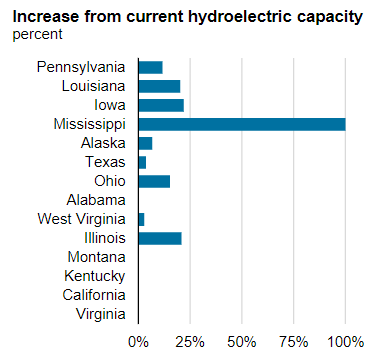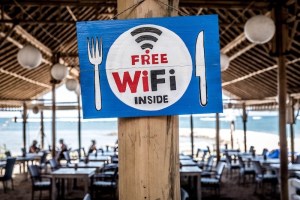Image source: https://www.wsp.com/en-AU/sectors/hydropower
In the global energy transformation driven by dual imperatives of decarbonizing the economies and fostering sustainable growth, it is important that deployment of renewables must be done on a massive scale. While in the last few years renewable power technologies have dominated the global market for new generation capacity, the clean energy transition cannot be completed through technological developments alone. With wind and solar power dominating the growth in renewable energy generation, it is essential to recognize the potential of hydropower in ensuring stability to the power grid and enabling variable renewable energy integration (wind and solar power).
Need to Expand the Installed Capacity of Hydropower
As of 2019, the world has about 1300 gigawatts (GW) of hydropower capacity. According to the International Renewable Energy Agency (IRENA)’s Global Renewables Outlook 2020, there should be an increase of 60 percent in this hydropower capacity by 2050 to be able to meet the targets of the Paris Agreement on climate change. But at the current rate of its growth, the climate targets are difficult to attain. One of the reasons for the limited capacity expansion of hydropower is the lack of public awareness about the benefits of hydropower, which ranges from being a low emission energy source to offering benefits of storage, flexible generation, and water management opportunities. Undoubtedly, there are associated environmental and social costs to its development which can be minimized by increasing the efficiency of the hydropower projects and its correct pricing to limit overconsumption of the resource. Thus, an energy transition approach that involves increasing hydropower capacity through efficiency enhancements, and correct pricing of hydropower can result in better outcomes for our environment and society.
Revamping the Aged Hydropower Fleet
One of the ways to achieve a better outcome is to generate additional capacity without building new hydropower projects. This can be done by upgrading and modernizing the world’s hydropower fleet. There is about 600 GW of existing hydropower capacity which is older than thirty years. Restoring the initial capacity of the turbines would extend the life of the equipment, but it is crucial to go beyond simple life extensions and revamp these hydro assets in order to meet future energy needs (IHA, 2020). Modernization efforts to the aging hydropower fleet are much needed in continents like Africa where there is a lack of access to electricity to around 50 percent of the population. Also, in the matured countries of Europe, where many hydropower sites have already been developed, capacity expansion can happen through revamping the old plants.
Huge Opportunity for Cross-Border Trade of Renewables
Another way to ramp up the efficiency of renewable resources is through fostering regional interconnections which would enable sharing energy resources across borders, thereby, increasing electricity access, and reducing power prices. In this way, large scale hydropower projects can achieve economies of scale in countries where surplus hydropower potential exists. For instance, in South Asian countries such as Afghanistan, Bhutan, and Nepal domestic demand for hydropower is expected to remain much smaller compared to the hydropower potential they have. Cross border export of surplus hydropower to other countries in the region having high electricity demand, like India, Pakistan, and Bangladesh would increase the share of hydropower in their capacity mix and drive them away from fossil fuels. Considering the vast hydropower resources in the region, efforts must be made to scale up the regional electricity trade, which is currently limited to small volumes of bilateral trade between India and its eastern and northern neighbours.
Regional transmission integration projects can also promote two-way trade of renewable power, instead of one-way trade, enabling greater utilization of existing hydro reservoirs as a balancing resource and also a more efficient use of wind and solar power. A research study by MIT Center for Energy and Environmental Policy Research, 2020, finds out that for Northeast US which imports hydropower from Quebec, Canada as a source of continuous clean energy, an increase in transmission capacity to facilitate two-way trade of renewable power instead of current one-way trade would be cost-effective and more efficient. According to the study, adding 4GW of transmission between New England and Quebec will lower the cost of a zero-emission power system across New England and Quebec by 17 to 28 %. Examples of two-way trade in renewable power can be drawn from Norway which is balancing wind power in Germany and is also building interconnections in other European countries to balance their Regional Energy system.
Economizing on Non-Powered Dams
Additional hydropower capacity can also be generated from thousands of non-powered dams (NPDs) by converting them to hydroelectric dams. This way, hydropower plants can tap the waters already flowing through the existing water infrastructure, resulting in an increased supply of renewable energy in a shorter time frame and also creating employment opportunities for the local communities with a low cost to the environment. Conversion of NPDs to hydroelectric dams can contribute to energy transformation in the US, where out of 90,000 dams only about 3 percent of the dams generate hydropower. A 2012 US Department of Energy Report estimated that NPDs have a potential capacity of 12 GW of hydropower generation in the US. Currently, addition of about 330 MW of electric generating capacity has been proposed through NPDs, implying that there exists huge potential for hydropower capacity to increase through such dams. Figure 1.1 shows the increase in the hydroelectric capacity of some states from the proposed NPD projects in the US (EIA, 2019).
Figure 1.1 Increase in Hydropower Capacity from proposed NPD projects in US states

Pricing Hydropower
While efforts are been made globally to increase the hydropower generation through efficiency enhancement, projects using existing resources, or building new projects, it is also essential for the government to not keep the hydroelectricity prices artificially low, which would lead to overconsumption of electricity, and “tragedy of the commons”–overexploitation of the common resources.
A study titled, “Hydropower Royalties: A Comparative Analysis of Major Producing Countries” (MDPI, 2017) compares the royalty rates, which in turn determine the electricity prices, set by the government of four main hydropower producers in the world: Brazil, China, Canada, and the United States. Results of the study show that governments in these countries have kept the royalty rates low, in some cases also lower than the market value, to keep the electricity prices low for their consumers. According to the study, this is an inefficient strategy as it results in larger electricity production and consumption, and hence exacerbates the cost to the environment and society.
Although there is a need to accelerate hydropower development globally, it should not be forgotten that fulfilling our energy requirements result in damage to the environment and local communities. However, an energy transition approach that aims to maximize the benefits, and minimize the costs can help us attain our climate goals, and also lead to sustainable development. By generating additional hydropower capacity using existing resources, and appropriately pricing hydropower, better outcomes can be achieved.







